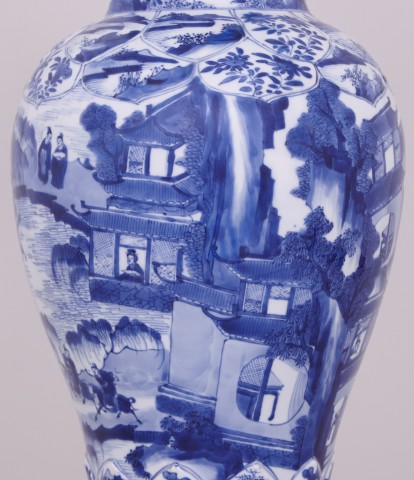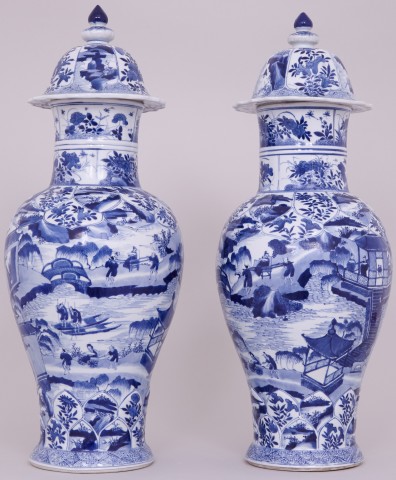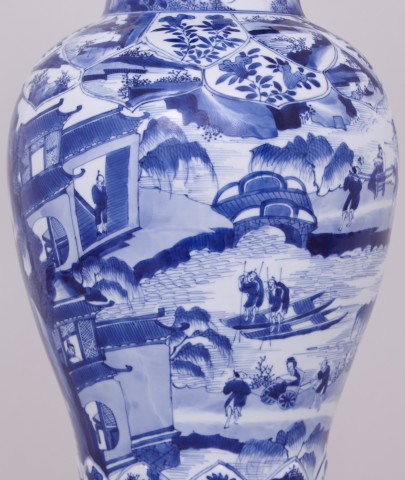BA24 & BA25
Further images
Of baluster shape, with straight necks, slightly everted feet and double-knopped domed covers, decorated in bright shades of underglaze blue with on the bodies finely painted continuous landscape scenes set in watery landscapes with figures engaged in various pursuits; ladies with fans standing on a terrace built on the water, another lady walking across a jetty to reach the terrace, boats being navigated, figures on horse-back riding across the land or reaching bridges, further figures waiting amongst a maze pagodas and ladies being carried in chairs or pushed in small carriages, the shoulders decorated with two layers of moulded petal-shaped panels painted with flower-sprays and small landscapes, mirrored above the feet, the neck with two tiers of rectangular panels painted with flowers issuing from stylized rock-work and little insects, the tiers divided by a moulded band, the covers similarly decorated with moulded petal-shaped panels on a ground of trellis-work and finished with double knopped finials, the lower knop moulded and painted as a flower head, the top in dark blue, the interior of the everted rims of the covers decorated with stylized scrolling flowerheads, the moulded feet with a band of trellis-work, the bases glazed and painted with a fungus-motif.
Object number: BA24 BA25
Footnote: For a similarly decorated and formed pair of vases, also with a lingzi fungus on the base but without their covers, see Philadelphia Museum (accession numbers 1935-10-33a, 1935-10-33b, Bequest of John W. Pepper, 1935).
This is an exceptional design. Not only is the painting on the body exquisite in its level of intricacy, it is highly unusual to find this kind of typical Kangxi decoration between raised lotus-petal borders, as appears on these vases. In addition, the elegant neck with the bamboo-style division is most unusual; to find all three styles of decoration together is rare. The Kangxi period is often referred to as the ‘Age of Innovation’, when many new styles and techniques were developed, which makes these vases a charming example of different characteristics perfected during that time.
Provenance
Säfstaholm Castle, Vingåker, Sweden








